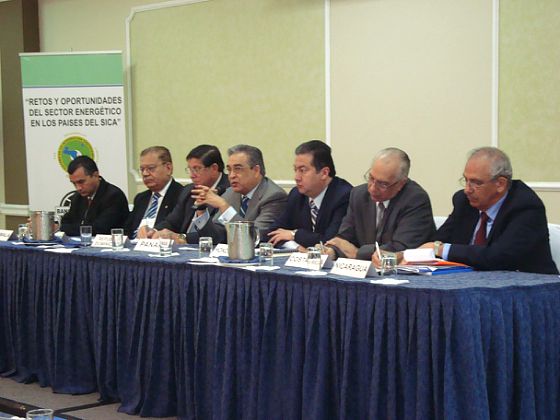News
Central America Energy Integration: Workshop on Energy Sector Challenges and Opportunities
July 14 2010

The six Central American countries of Costa Rica, El Salvador, Guatemala, Honduras, Nicaragua and Panama share a long tradition of regional integration, including a common market, substantial intraregional trade, as well as coordinated commercial policies. The most significant example of regional integration in the energy subsector consists of the Sistema de Interconexión Eléctrica para América Central (SIEPAC), an interconnection line that is expected to link the six countries by early 2012.This regional connection will increase energy reserves, promote energy efficiency and lower energy production costs through economies of scale.
The World Bank has prepared a series of reports as part the Central America Programmatic Energy Studies to better understand the energy challenges facing these six Central American countries that are to be joined by SIEPAC. The studies show that individual electricity markets in this sub-region are very different, varying significantly in their quality of service and in their efficiency in production and delivery. In addition, the fragmentation of the sub-region’s electricity market into small units has presented challenges for meeting a growing demand and has raised supply costs. Ultimately, the studies which will be published by end of September 2010, seek to identify actions to promote the sound development of the sector.
To help make this a reality, the World Bank and the Energy Sector Management Assistance Program – ESMAP brought together energy authorities, to identify common challenges and opportunities that exist in the energy sector. The two day workshop was held this May, in Panama City.
The first day of the workshop was dedicated to technical discussions about renewable energy, in particular, biofuels, hydropower, and geothermal energy, as well as strategies to confront periods of electricity shortfalls. During day one, findings of a recently completed World Bank-ESMAP Central American Energy Sector Programmatic study were presented and disseminated to regional participants. The second day was attended by five Energy Ministers and was used to present the energy challenges and opportunities of the sector.
Juan Miguel Cayo, World Bank’s Senior Energy Specialist said, “The purpose of this inter-ministerial workshop was to promote discussion about how the World Bank can more effectively support the regional energy agenda of Central America.” “Regional energy integration is necessary, but not sufficient, to meet the sub-region’s electricity needs. A number of steps need to be taken to fully exploit benefits of integration. These include addressing physical, regulatory, institutional and political issues on both national and regional levels as part of an effective integration plan,” he said.
The workshop concluded with a meeting of the Council of Energy Ministers, who exchanged ideas, shared concerns, and discussed common energy strategies. The meeting was also attended by high level officials of various multilateral organizations.
